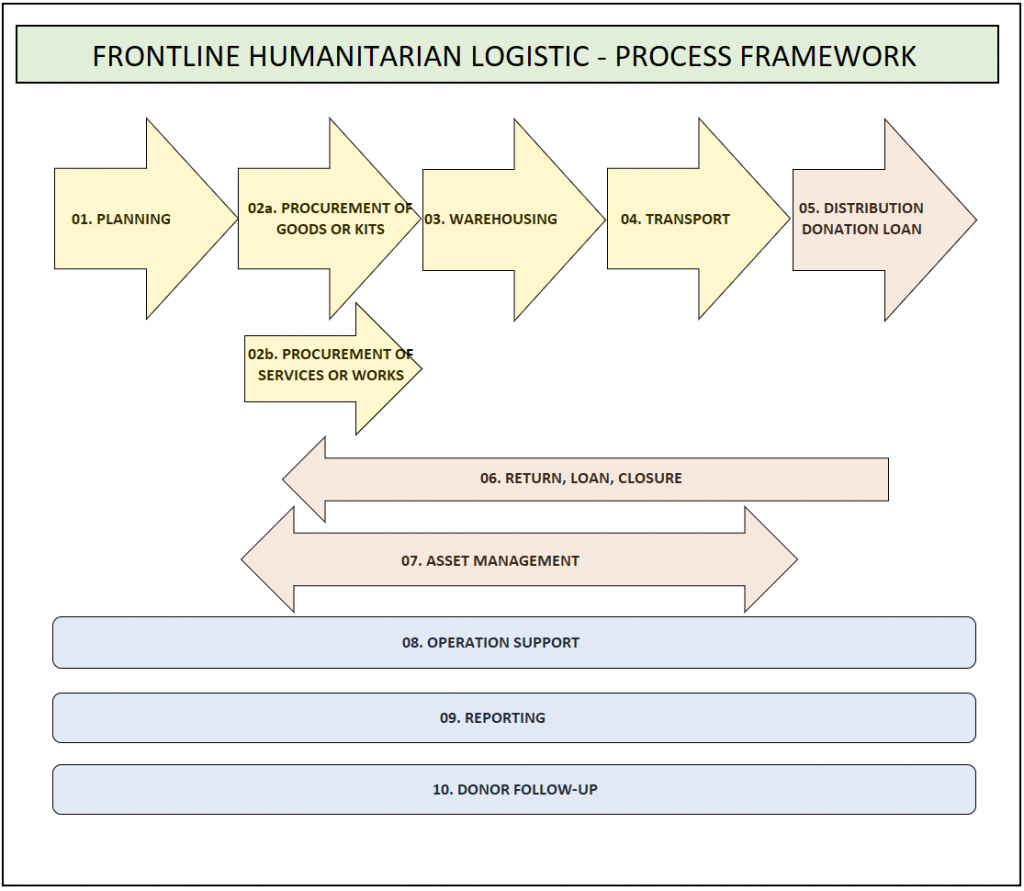30.09.2020
Diego Vega, PhD.
Deputy Director, The HUMLOG Institute
Supply and Logistics is a critical technology capability that is required for humanitarian emergency operations. Many of the 71 million forcibly displaced people depend on humanitarian response for lifesaving support in post-disaster and conflict environments. Yet, in 2019 much of the humanitarian sector is still dependent on spread sheets to manage Frontline Humanitarian Logistics. This unserved need is due to industry specific requirements of the Humanitarian sector that are quite unlike commercial logistics solutions. Commercial solutions have proved inadequate in the last-mile, austere and rapid scale up environments that we face in humanitarian response. The sector has created many home-built solutions or cross-organization attempts such as HELIOS. While fulfilling the immediate needs at the time, these solutions have not delivered on their promise. We also see sub-verticals in our sector such as healthcare and WASH, that lead organizations to developing custom, non-interoperable solutions. These are failing to deliver capability and value to sector organizations due to inadequate investment.
With many INGO’s currently moving to ERP systems, or renewing their partnerships with existing solutions, there is a window of opportunity to deliver a sustainable technology capability for the humanitarian community, interoperable with our wider organization’s capabilities. With this idea in mind, the Frontline Humanitarian Logistics (FHL) initiative was created to reduce the time and cost involved in implementing IT solutions within humanitarian supply chains and encourage interoperability of systems across the sector, the holy grail in terms of NGO collaboration. The HUMLOG Institute was asked by the project sponsor to support the initiative with a team of experts that provide academic and methodological rigor to the process. The initiative’s goal is to convene cross-sector stakeholders to create a common understanding of frontline humanitarian logistics and specify a core data model for subsequent sector vertical development.
To ensure the relevance and the validity of the process framework, a series of webinars were designed and facilitated by the HUMLOG Institute’s team following the Delphi method, to achieve consensus on the structure and content of the FHL Process Framework and data entities. The FHL panel was built around experts from 19 humanitarian organizations that participated and shared their knowledge on a 3-rounds process. The Delphi process started with an opening webinar in which the initiative was presented to the participants and the technique explained. Using the first version of the process framework as a platform for questionnaire development in subsequent iterations, participants were asked to respond to the level of relevance and importance of both L1 and L2 processes and L1 data groups, as well as the accuracy of the terms using a 4-point Likert scale. Results were normalized using the respondent’s confidence, analyzed using the mode (i.e. the one that occurs most) and presented to participants in the first round. Based on the group discussion, the process framework was refined and submitted for evaluation and further discussion in round 2. An important level of consensus was achieved at this point at the process level, which enabled the study to focus on the data level for the third round. A third questionnaire was administered seeking validation on data levels 1 to 3 and results were discussed during the last round. A closing webinar was finally used to share the results of the study and engage with participants for the future use and development of the FHL data model.
The resulting process framework is constituted of 10 Level 1 Processes, each of them divided into Level 2 Processes, which are listed and defined following the commonly accepted flow of goods. From the 10 level one processes, four are generic logistics processes (i.e. supply and logistics planning, procurement, warehousing and transport), three are humanitarian sector specific (i.e. distribution, donation or loan; return, loan or closure; asset management), and three are enablers (i.e. operation support, reporting and donor follow-up). Level 2 processes were structured to be as specific as possible and are each linked to one specific goal or specific output. Some level 2 processes have very similar tasks (e.g. 05.5 Donations (outbound) and 05.6 Loans (outbound)) but lead to different outputs (i.e. donation certificate and Loan recording & Loan return process). This separation is clearly stated here for future users to be able to use and adapt this framework according to their own field activities, in an easy manner, without having to split level 2 processes. For better understanding of each level 2 objective or output and the main tasks implied, Level 2 Process descriptions have been produced and included in a how-to guide.
The creation of a common process and data standard across the sector will save significant time and cost for NGOs implementing FHL systems, as they will have a good starting point with common processes and naming conventions for data entities agreed. Further, it will support optimization of aid flows by enabling interoperability of information systems between organisations and lower the adoption threshold of IT for humanitarian organisations by enabling commercial product offerings that are pre-configured for the specific challenges and demands of humanitarian supply chains. Finally, the FHL common process and data standard will strengthen local control over, and integration of, local resources in aid operations by enabling consolidated management of information across all emergency response actors.
The FHL initiative is currently working on its third phase, engaging with technology partners to study the feasibility of a potential application or pilot of the FHL common process and data standard. Currently, discussions have started with some of the top vendors that either have a solution in the market or are interested in developing such solution for the sector. When achieved, the common process and data standard for the humanitarian context will help organizations, service providers and even governments to finally improve supply chain collaboration and visibility, which would result in better coordination and thus, better response to the many and different crises that humanitarian organizations need to face. The HUMLOG Institute fully supports the initiative, providing continuous advice during the third phase as a member of the advisory board.




